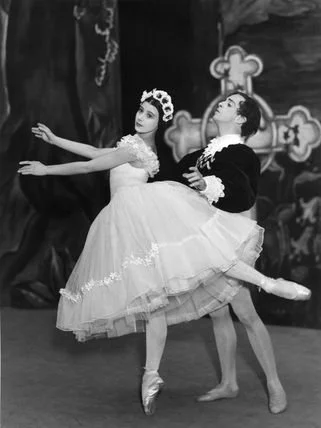Sir Robert Helpmann
Australia’s most famous entertainer 🎬
A jack-of-all-trades and a global favourite, Sir Robert Murray Helpmann was an Australian ballet dancer, choreographer, actor, director, and producer. An extraordinarily versed entertainer, his flamboyance and charm were a persisting presence on stages around the world for nearly 60s years.
Born 9 April 1909 at Mount Gambier, Helpmann’s early life was heavily influenced by the strong female artists who surrounded him. His mother was a talented performer herself and a driving force in Robert’s early career. Helpmann’s first ballet teacher, the legendary Nora Stewart, taught Helpmann to “appreciate classical music and to understand what dance meant”. At just 13 years old, Robert took his first steps into the spotlight, when he appeared on stage at the Theatre Royal, Adelaide as a solo dancer in The Ugly Duckling. By 18 he joined the joined J. C. Williamson Theatres as a principal dancer.
Born 9 April 1909 at Mount Gambier, Helpmann’s early life was heavily influenced by the strong female artists who surrounded him. His mother was a talented performer herself and a driving force in Robert’s early career. Helpmann’s first ballet teacher, the legendary Nora Stewart, taught Helpmann to “appreciate classical music and to understand what dance meant”. At just 13 years old, Robert took his first steps into the spotlight, when he appeared on stage at the Theatre Royal, Adelaide as a solo dancer in The Ugly Duckling. By 18 he joined the joined J. C. Williamson Theatres as a principal dancer.
An iconic partnership
In 1933 Robert took his talents to the Sadler Wells dance company in London. Helpmann was promoted in 1935 to principal male dancer, a position he retained with increasing authority until he resigned in 1950. During this time, he formed a lasting friendship with prima ballerina Margot Fonteyn and became her regular partner. During World War II the Saddler Wells Ballet toured Europe on behalf of the armed service. Robert and Margot were a favourite pairing across Europe.
According to Fonteyn, Helpmann was, ‘the person who, more than any other, kept the company going’ through his grit and humour.
Roberts off-stage charm translated to a commanding stage presence. Many thought he spread his talents too thinly, and denied himself mastery over any one area. Beyond ballet, Helpmann was also keenly involved in theatre, serving in many capacities from acting to direction and stage production.
With an instinctive sense for choreography, Helpmann created several full length ballets and many original works. Helpmann would eventually take his choreography talents off the stage and on to the screen. He provided stage direction for works such as the critically lauded and influential 1948 film The Red Shoes, the centre piece of which was a 15-minute ballet sequence choreographed and performed by Helpmann.
Robert Helpmann in The Red Shoe, 1948
Helpmann continued to tour around the world well into his 50s and flat out refused to retire from the stage. It was the early days of the Australian Ballet and in 1965 Helpmann became co-artistic director of the company, with (Dame) Peggy van Praagh. This complementary relationship resulted in many new works and attracted international names to the company. By the end of the 60s Sir Robert Helpmann’s legacy earned him Australian of the Year and a Knighthood.
In 1985 Helpmann was the Red King in Checkmate for The Australian Ballet, reviving a role created for him nearly half a century before. This would be Roberts last stage appearance.
Helpmann died on 28 September 1986 in Sydney. On 7 October Prime Minister Bob Hawke moved a condolence motion in the House of Representatives—a rare tribute for a non-politician. Helpmann set an impeccably high standard for any who would look to follow his lead on and off the stage, and the impact of his work is still felt through the Australian dance and entertainment industries.





